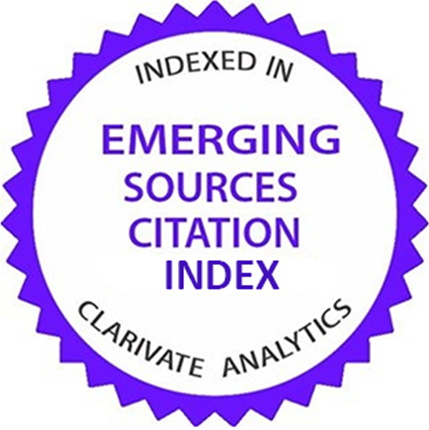Prognostic values of urea/lymphocyte and LDH/lymphocyte ratios for predicting mortality in COVID-19 patients
Abstract
Objective: Serum biomarkers are important for accurately predicting clinical outcomes in coronavirus disease 2019 (COVID-19) patients. Although previous studies showed that lymphopenia in patients is related to disease severity, it is unclear how other serum biomarkers improve the prognostic accuracy of lymphopenia. Changes in urea, and lactate dehydrogenase (LDH) were noted to have considerable predictive value in determining the severity of disease in COVID-19 patients. Therefore, the purpose of this study is to determine whether increases in urea, and LDH are linked to worse outcomes in COVID-19 patients and whether the urea/lymphocyte and LDH/lymphocyte ratios improve the prognostic accuracy of lymphopenia.
Methods: The data of confirmed COVID-19 patients in our emergency department (ED) between March 2020, and January 2021, were analyzed retrospectively. The area under the curve (AUC) and logistic regression analysis were used to evaluate the discriminative power of the urea/lymphocyte and LDH/lymphocyte ratios in estimating 30-day mortality.
Results: The study included 795 confirmed COVID-19 patients admitted to the ED. Twenty-three patients (2.9%) died, and 772 (97.1%) survived in 30 days. The median age of the patients was 51. The number of males (n: 447, 56.2%) was higher than females (n: 348, 43.8%). The ratios of urea/lymphocyte and LDH/lymphocyte were significantly higher in non-survivors (median: 71.21 and 754.1, respectively) compared to survivors (median: 19.51 and 297.42, respectively) (P<0.001). The AUC for 30-day mortality for the urea/lymphocyte and LDH/lymphocyte ratios was 0.864 and 0.840, respectively. Multivariate logistic regression adjustment found the urea/lymphocyte ratio to be an independent and significant predictor of mortality (P=0.007). The optimum cut-off point for the urea/lymphocyte ratio was 28.07, which had a 91.3% sensitivity and a 68.6% specificity.
Conclusion: The urea/lymphocyte and LDH/lymphocyte ratios are useful markers that can be evaluated independently to identify high-risk patients and predict the prognosis of COVID-19.
Hu B, Guo H, Zhou P, Shi ZL. Characteristics of SARS-CoV-2 and COVID-19. Nat Rev Microbiol. 2021;19(3):141-54.
Elshazli RM, Toraih EA, Elgaml A, El-Mowafy M, El-Mesery M, Amin MN, et al. Diagnostic and prognostic value of hematological and immunological markers in COVID-19 infection: a meta-analysis of 6320 patients. PLoS One. 2020;15(8):e0238160.
Huang I, Pranata R, Lim MA, Oehadian A, Alisjahbana B. C-reactive protein, procalcitonin, D-dimer, and ferritin in severe coronavirus disease-2019: a meta-analysis. Ther Adv Respir Dis. 2020;14:1753466620937175.
Niu J, Sareli C, Mayer D, Visbal A, Sareli A. Lymphopenia as a predictor for adverse clinical outcomes in hospitalized patients with COVID-19: a single center retrospective study of 4485 cases. J Clin Med. 2022;11(3):700.
Diao B, Wang C, Wang R, Feng Z, Zhang J, Yang H, et al. Human kidney is a target for novel severe acute respiratory syndrome coronavirus 2 infection. Nat Commun. 2021;12(1):2506.
Wan Y, Shang J, Graham R, Baric RS, Li F. Receptor recognition by the novel coronavirus from Wuhan: an analysis based on decade-long structural studies of SARS coronavirus. J Virol. 2020;94(7):e00127-20.
Perico L, Benigni A, Remuzzi G. Should COVID-19 concern nephrologists? why and to what extent? the emerging impasse of angiotensin blockade. Nephron. 2020;144(5):213-21.
Feron O. Pyruvate into lactate and back: from the Warburg effect to symbiotic energy fuel exchange in cancer cells. Radiother Oncol. 2009;92(3):329-33.
Tao RJ, Luo XL, Xu W, Mao B, Dai RX, Li CW, et al. Viral infection in community acquired pneumonia patients with fever: a prospective observational study. J Thorac Dis. 2018;10(7):4387-95.
Yamaguchi S, Abe M, Arakaki T, Arasaki O, Shimabukuro M. Prognostic value of lactate dehydrogenase for mid-term mortality in acute decompensated heart failure: a comparison to established biomarkers and brain natriuretic peptide. Heart Lung Circ. 2020;29(9):1318-27.
Cui J, Xiong J, Zhang Y, Peng T, Huang M, Lin Y, et al. Serum lactate dehydrogenase is predictive of persistent organ failure in acute pancreatitis. J Crit Care. 2017;41:161-5.
Dong X, Sun L, Li Y. Prognostic value of lactate dehydrogenase for in-hospital mortality in severe and critically ill patients with COVID-19. Int J Med Sci. 2020;17(14):2225-31.
Chen N, Zhou M, Dong X, Qu J, Gong F, Han Y, et al. Epidemiological and clinical characteristics of 99 cases of 2019 novel coronavirus pneumonia in Wuhan, China: a descriptive study. Lancet. 2020;395(10223):507-13.
Yang X, Yu Y, Xu J, Shu H, Xia J, Liu H, et al. Clinical course and outcomes of critically ill patients with SARS-CoV-2 pneumonia in Wuhan, China: a single-centered, retrospective, observational study. Lancet Respir Med. 2020;8(5):475-81.
Xie J, Covassin N, Fan Z, Singh P, Gao W, Li G, et al. Association between hypoxemia and mortality in patients with COVID-19. Mayo Clin Proc. 2020;95(6):1138-47.
Shi L, Wang Y, Wang Y, Duan G, Yang H. Dyspnea rather than fever is a risk factor for predicting mortality in patients with COVID-19. J Infect. 2020;81(4):647-79.
Wang D, Hu B, Hu C, Zhu F, Liu X, Zhang J, et al. Clinical Characteristics of 138 hospitalized patients with 2019 novel coronavirus-infected pneumonia in Wuhan, China. JAMA. 2020;323(11):1061-9.
| Files | ||
| Issue | Vol 7 No 3 (2023): Summer (July) | |
| Section | Original article | |
| DOI | 10.18502/fem.v7i3.13820 | |
| Keywords | ||
| Biomarkers COVID-19 LDH/Lymphocyte Ratio Mortality Urea/Lymphocyte Ratio | ||
| Rights and permissions | |

|
This work is licensed under a Creative Commons Attribution-NonCommercial 4.0 International License. |










